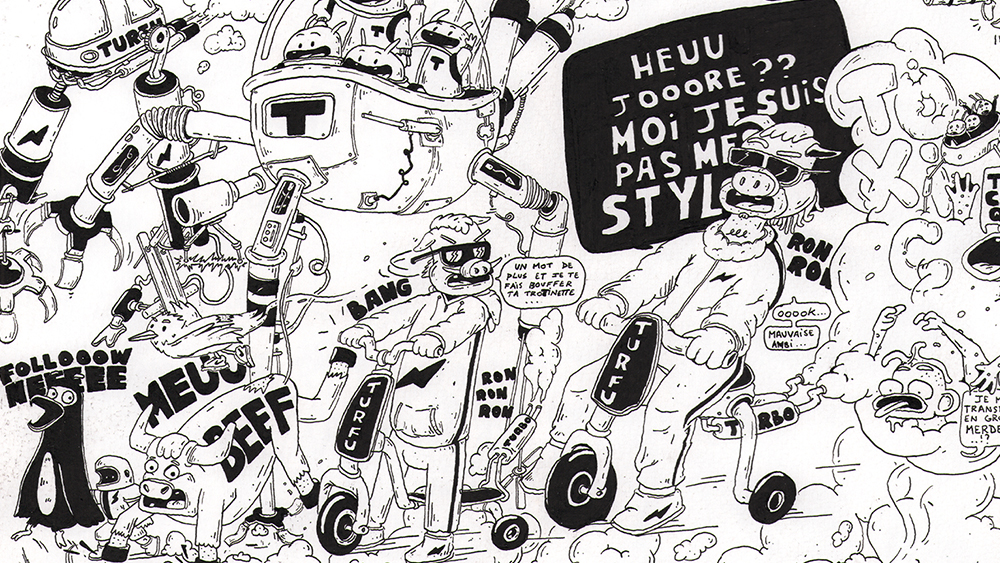Mac Mini vs MacBook Pro: which one should you buy?
The Mac Mini vs MacBook Pro? Which is the best creative tool for you? We break down all the differences.
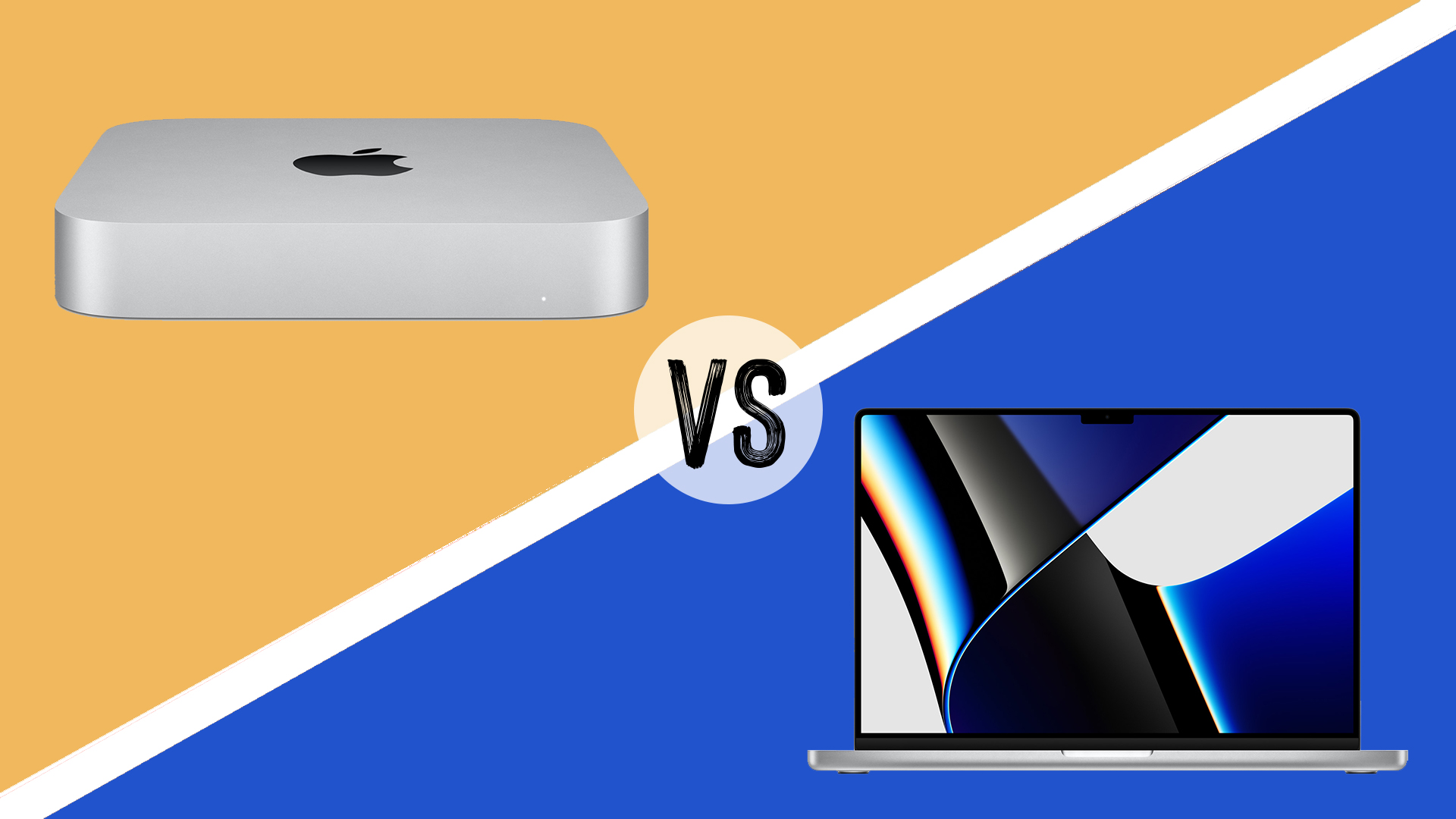
If you're looking into the Mac Mini vs MacBook Pro, you'll be looking for a Mac as your next creative tool. The Mac Mini offers the best-value way to set up a workstation, but the MacBook Pro gives you the extra flexibility of working on the go when you need it.
And it's not just about the basic question of price vs flexibility – there are different versions of the both the Mac Mini and the MacBook Pro, so the question is which version of which device is the best fit for you overall.
Part of this consideration is the fact that Apple now offers versions of the Mac Mini with Apple M1 or Intel chips, but only offers Apple M1 chips on the MacBook Pro line if you buy new.
So in this guide, we'll take you through all the differences when it comes to connections, performance, software and anything else it's crucial to know.
There's no question that the new MacBook Pros rank among the best MacBooks Apple has made for creatives yet in many ways, but when you're looking at your whole workflow, there are reasons the Mac Mini may be the more suitable option.
If you want an Intel MacBook Pro, we won't be talking about them here since Apple doesn't officially sell them any more, but keep your eye on our guide to the best cheap MacBook Pro deals for offers on them while they last.
And don't forget our guides to the best monitors for Mac Mini and the best monitors for MacBook Pro – you'll want a big, proper screen for either machine when you're working at your desk.
Daily design news, reviews, how-tos and more, as picked by the editors.
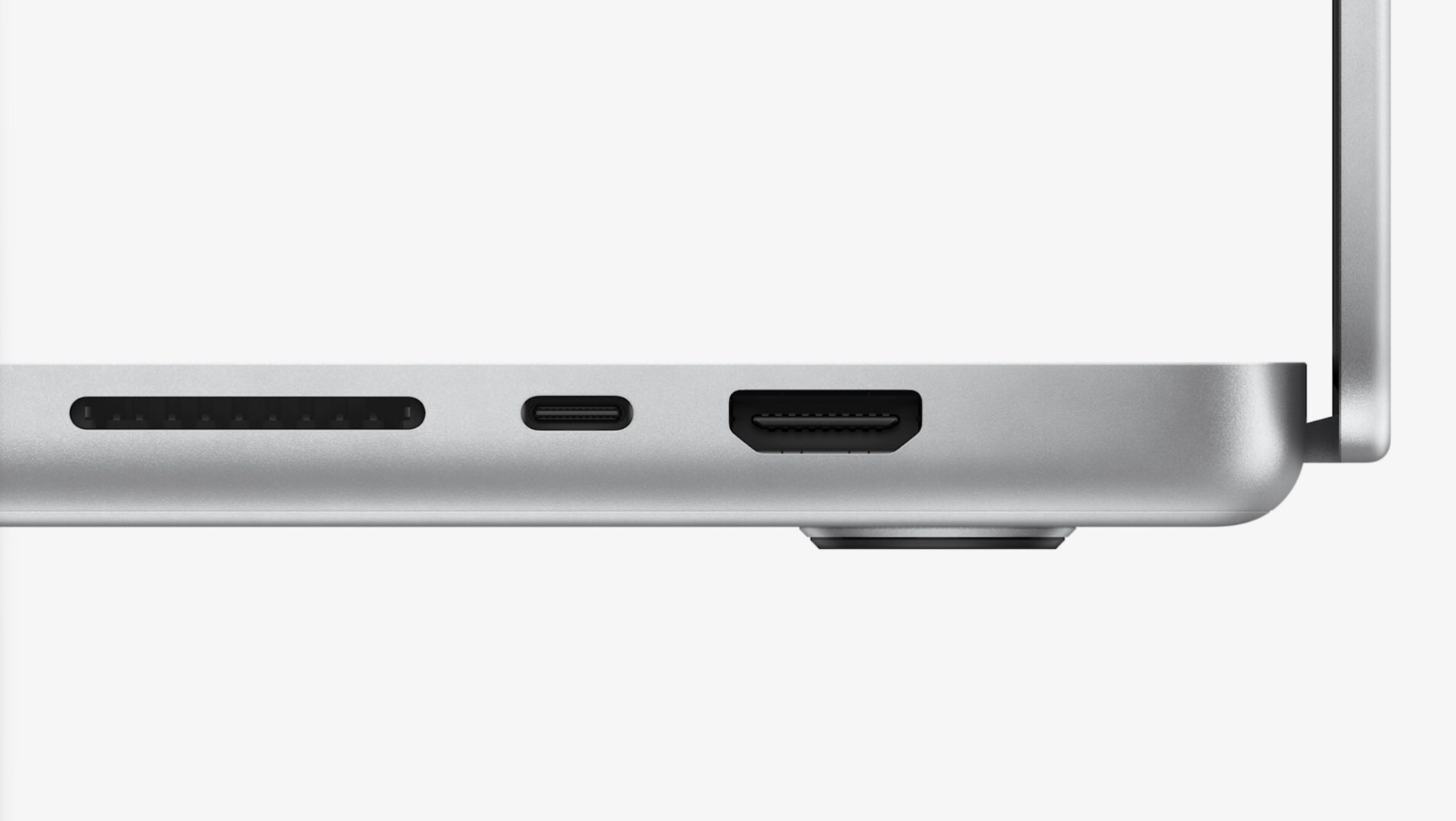
Mac mini vs MacBook Pro: Design & connectivity
The Mac mini has exactly the same design as it has for several years, which is a small aluminium block. Specifically, a block 7.7 inches wide and deep, and 1.4 inches high. This is the same whether you get it with an Apple-made processor or an Intel option – though the Apple version is silver and the Intel is dark grey.
The Mac mini has a great suite of built-in connectivity. The M1 version includes two USB-C/Thunderbolt 3 ports, two USB-A ports, an HDMI 2.0 connector, 3.5mm jack, and a Gigabit ethernet port (which you upgrade to 10Gb).
The Intel version expands on this, adding two more USB-C/Thunderbolt 3 ports. It's also worth noting here that the M1 version officially supports two displays maximum (one up to 6K and one up to 4K), while the Intel version supports three displays maximum (4K max – two displays if one is 5K. There's no official 6K support here).
The 13-inch MacBook Pro is, again a familiar design for anyone who's looked at Apple laptops in the last few years. It's impressively thin and light for a portable machine with the power that the M1 chip offers (though the Intel model is the same size, it's much less powerful).
Again, it's all aluminium, with a great level of fit and finish. You can choose a silver or darker 'space grey' finish in this case.
Apple gets key things right year after year, including elements such as the stiffness of the hinge, and the size of the trackpad. The keyboard is excellent too, delivering just enough travel, and great feedback.
Connections are very light on the M1 MacBook Pro 13-inch, though. You get just two USB-C/Thunderbolt 3 ports, plus a 3.5mm headphone jack.
Then you have the new 14-inch and 16-inch MacBook Pros, which both share a design that's new and also decidedly retro. It takes its lines and black keyboard backing pretty much directly from the much-loved titanium iBook from back in the day, and it's a fetching if unexciting design.
What's more exciting is that these machines have better connectivity than the 13-inch model. There's three USB-C/Thunderbolt 4 ports, an HDMI 2.0 port, an SD card reader, and a 3.5mm jack with higher-power output to drive high-impedance headphones. There's also the return of the MagSafe charging connector, and you can use either this or the USB-C ports to charge it.
The MacBook Pros support either two 6K displays (with the M1 Pro chip) or three 6K displays plus an additional 4K display (with the M1 Max chip).
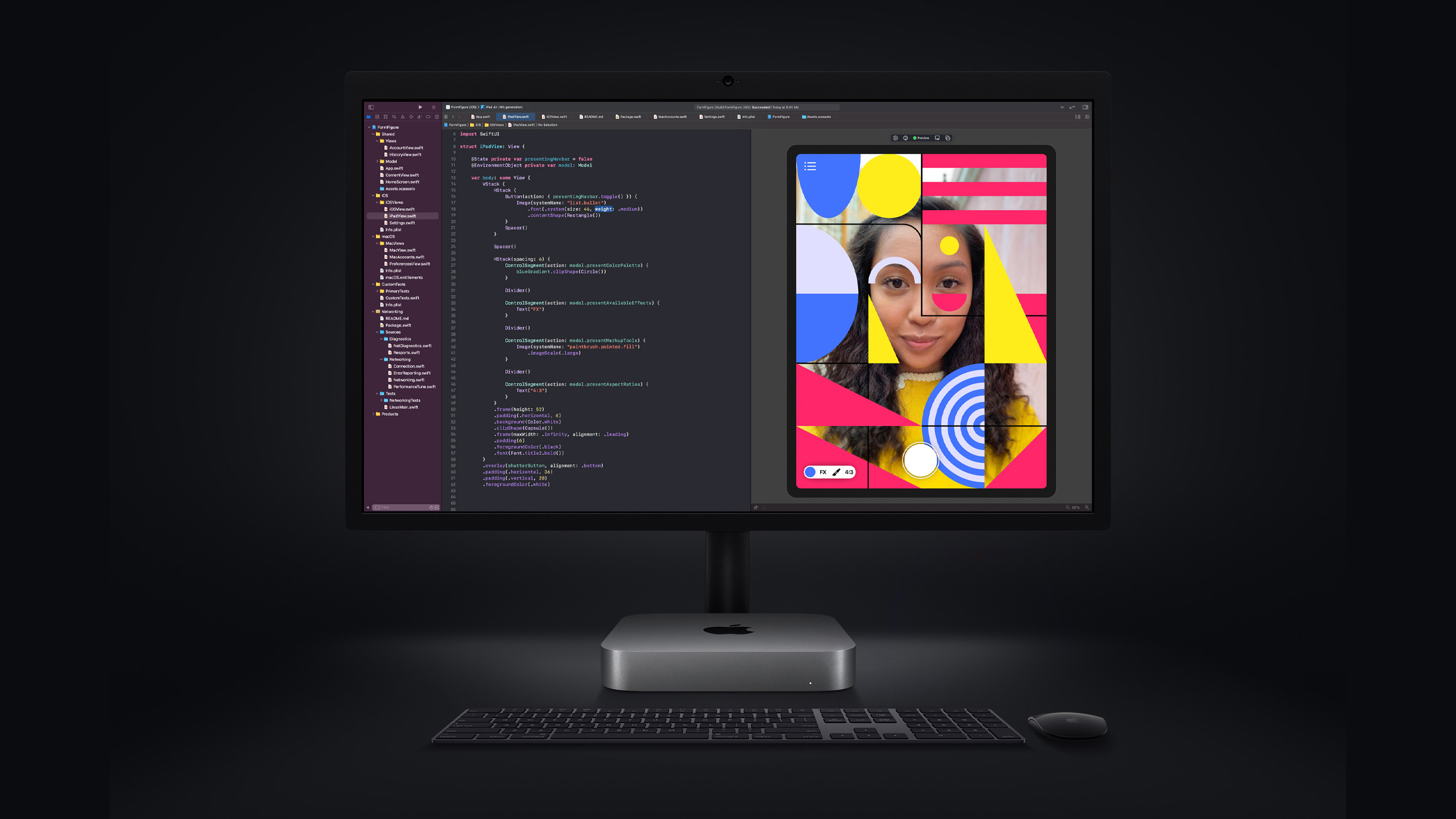
Mac mini vs MacBook Pro: Performance
The good news about Apple's self-made chips is that they make performance comparisons very easy indeed, because there are fewer variations than the myriad Intel processors out there.
For example, the M1 Mac Mini and M1 MacBook Pro 13-inch are pretty much identical for performance. They feature the same processor with eight cores in total, including four high-performance cores and four 'efficiency' cores for less demanding tasks. They also both feature an eight-core GPU that's very impressive considering the size of both machines, and is more than capable of handling 2D creative tasks and things like light gaming.
Both models come with 8GB of RAM as standard, and can be configured to 16GB maximum.
The Intel Mac mini features a 3GHz six-core Intel processor as standard, plus Intel's integrated graphics, which is hugely less capable than Apple's, though will be enough for basic 2D creative work. You can configure the Intel Mac Mini with up to 32GB of RAM, though, which may be exactly what you need – this is really the only spec area where the Intel Mac Mini even comes close to laying a glove on the M1 version.
The 14-inch and 16-inch MacBook Pros, however, are where things get really spicy. They both give you the option of the M1 Pro or M1 Max, which are much more powerful versions of Apple's chip.
The M1 Pro features an eight- or 10-core processor, which features more of the high-performance cores than the regular M1, along with double the memory bandwidth. The result is up to 70% more performance, though this will be almost entirely in multi-core tasks – for single-core, don't expect much of a change from the regular M1.
The M1 Pro features 16GB or 32GB of memory, and has a 14-core or 16-core GPU, making it up to twice as powerful for graphics performance as the regular M1. Apple says it's capable of around 5.2TFLOPS of power from the GPU, which is… quite a lot, for such a thin machine. And because the memory is shared between the GPU and the CPU, that's potentially a lot of memory available for 3D rendering even within this 'mid-range' chip.
The M1 Pro also features hardware acceleration for ProRes video for the first time (along with more common video codecs), which can help massively for live editing and playback of ProRes in an editing environment, and for exports.
The M1 Max doubles the memory bandwidth again, doubles the GPU cores again to create 10TFLOPS of power (this is what the PlayStation 5 is said to hit, as a point of reference, though the two aren't directly comparable), and offers up to 64GB of unified memory. No other laptop is able to provide this much memory for the GPU to use directly.
Apple also threw in even stronger ProRes hardware acceleration here, allowing for more simultaneous streams.
The M1 Pro and M1 Max are just ridiculous. There are Windows PCs that can compete with the power here, but they require huge and power-hungry separate CPU and GPU chips, and need to be about about a foot thick. (Okay not that thick, but easily double the thickness of the MacBook Pro.)
Sadly, there isn't currently a Mac Mini with the M1 Pro or M1 Max – we expect that there will be in the future, but right now, if you want the fastest possible CPU or GPU, or largest amount of memory, the MacBook Pros deliver it.
A quick note on storage: all of these devices use ultra-fast PCIe SSDs, but while the Mac Mini (both versions) and 13-inch MacBook Pro can be fitted with up to 2TB, the MacBook Pros can be configured with up to 8GB.

Mac mini vs MacBook Pro: Software & compatibility
All Mac Mini and MacBook Pro models currently for sale run the latest version of macOS, and it looks and works pretty much identically on them, which keeps things nice and simple in that regard.
However, it's worth noting that the Mac Mini Intel, as the only Intel model still available in these ranges (though older Intel MacBook Pros can still be found at retailers currently), does have slightly better software compatibility with apps than the new M1 Macs.
Ideally, apps should be compiled specifically to run on the new Apple-made processors, and not all apps are yet. Most of the biggest names already have been made to run natively, or are in the process of changing – this includes software from the likes of Adobe, Microsoft, Autodesk, Serif and more.
The good news is that anything that isn't already natively working with Apple-made chips can still run on Macs with M1 series processors – but they'll run through a translation layer named Rosetta 2, which impacts performance slightly. However, the M1 chips are so fast compared the Intel options that this doesn't actually make them any slower than when running on Intel, so that's fine.
The bad news is that when running on Apple-made chips – whether natively or translated – you might find some quirks. Not every Photoshop option is available on M1 Macs, for example, even though the app runs natively. And while ProTools runs on M1 Macs properly, the Avid Video Engine doesn't, so that option is missing.
If you run a non-native app via Rosetta 2, it's possible you'll see more issues, such as plug-ins struggling.
The M1 Macs are far from a problem when it comes to compatibility, but if you're a creative pro, you're the kind of user where these issues are more likely to come up, even if they're not definite.
It's well worth checking with the support for any key bits of software you can't live without to see if the M1 Mac range is ready to replace Intel for you.
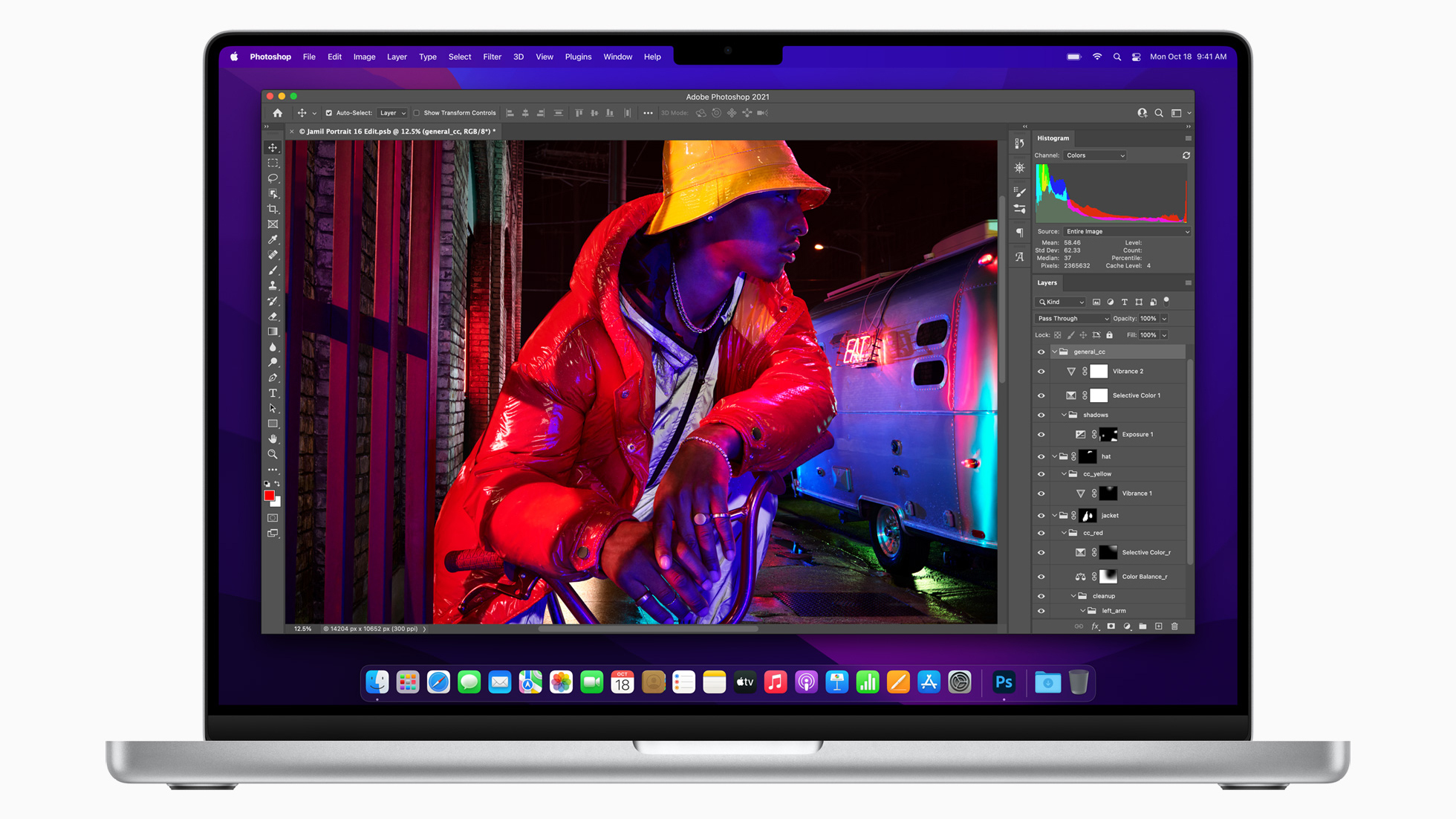
Mac Mini vs MacBook Pro: Other features
Obviously, the MacBook Pros have screens, and the Mac Mini very much does not. The 13-inch MacBook Pro has a 2560x1600 IPS display with P3 colour support and typical brightness of 500 nits, the 14-inch model boosts the resolution to 3024x1964 and upgrades to a mini-LED HDR display capable of peak brightness of 1,600 nits, and the 16-inch model also features the HDR display but with a resolution of 3456x2234.
All MacBook Pro models have impressive stereo speaker arrays, firing up from the left and right of the keyboard, and creating not only positional left and right audio, but also manage not to sound like the audio is coming from on the desk. The quality is great (though nothing compared to a proper set of monitors, of course), and the larger models use a clever force-cancelling driver configuration, so that you won't feel vibrations when typing.
The Mac Mini does have a speaker, but it's pretty much only making sure you can hear the occasional system warning. You'll want to add something external for sure.
The MacBook Pros all also have a webcam and mic array built-in. Again, the Mac mini will need something else added to it.
It's the same story with keyboard and mouse, of course. The laptops have the great keyboard and trackpad we mentioned earlier, and include Touch ID fingerprint unlocking as a result.
The good news is that you can now get an Apple wireless keyboard with Touch ID built in that works with the M1 Mac Mini, so you don't have to miss out on this feature. The Intel Mac Mini doesn't support this feature.
The 13-inch MacBook Pro features Apple's 'Touch Bar' strip above the keyboard – a mini second screen that basically acts as contextual buttons, changing depending on what app you're in and what tool you're using. It can be useful, if you remember to use it – we've found that we very much can live without it, so the fact that this isn't available to the Mac Mini or the 14-inch and 16-inch MacBook Pros probably won't be an issue for you.
And though it's obvious, we'd be remiss if we didn't mention that the MacBook Pros offer up to 17 hours of wireless web browsing from their batteries (depending on model), which the Mac Mini lacks.
Mac mini vs MacBook Pro: Price
The Mac Mini with M1 chip is the cheapest option, unsurprisingly. It's available with 256GB of storage and 8GB of memory for £699/$699/AU$1,099. You can then configure the storage and RAM up from there as needed.
The Mac Mini Intel starts from £1,099/$1,099/AU$1,699 with 8GB of RAM and 512GB of storage. Again, you can configure RAM and storage up from there, and there's a slightly faster processor option.
The 13-inch MacBook Pro starts from £1,299/$1,299/AU$1,899 with 8GB of memory and 256GB of storage, and you can configure storage and RAM up from there.
The 14-inch MacBook Pro starts from £1,899/$1,999/AU$2,999, which includes an M1 Pro with 8-core CPU, 14-core GPU and 16GB of memory. You also get 512GB of storage.
For £2,399/$2,499/AU$3,749 you can step that up to an M1 Pro with 10-core CPU, 16-core GPU and 16GB of memory, plus 1TB of storage.
Then you can switch up to the M1 Max with 10-core CPU, 24-core CPU and 32GB of memory if you want, for £2,999/$3,099/AU$4,649, or the full-strength M1 Max with 32-core GPU will cost £200/$200/AU$300 on top of that.
And finally, the 16-inch MacBook Pro starts from £2,399/$2,499/AU$3,749 for the 10-core M1 Pro with 16GB of memory, plus 512GB of storage. Switching to the M1 Max with 32-core GPU and 32GB of memory, plus 1TB storage, will cost you £3,299/$3,499/A$5,249.
Mac mini vs MacBook Pro: Verdict
This article has been complicated because of just how many different Mac Mini and MacBook Pro options there are right now, but actually when you look at any individual battle, the distinctions become clearer.
In the case of M1 Mac Mini vs M1 13-inch MacBook Pro, it's really just about whether you need the option to go portable sometimes or not. They're the same for performance – though the Mac Mini's lower price and more connections may be a factor too.
In the case of the M1 Mac Mini vs the 14-inch and 16-inch MacBook Pro, power is as much of a question as portability. Not only can the new MacBook Pros work away from a cable and screen, but they also offer workstation-class power, which the Mac Mini currently does not. They price is massively steeper, but so is what they can do.
And in the case of the Intel Mac Mini vs any of the M1-based Macs, it's just about the compatibility. The Intel machine is unquestionably slower, and is weaker value in combination with that. However, you might have some essential tools that aren't ready for M1, in which case the Intel Mac Mini is one of the few options you have remaining (alongside the 27-inch iMac and Mac Pro).

Matt is Managing Editor at TechRadar.com, and previously worked on T3, MacLife and MacFormat. He's been testing technology for over a decade, working in specialist Apple publications as well general technology and creative journalism, and has charted Apple’s ups and downs since his student days (but still hopes to hear “one more thing”). By day, you can find him covering TV, audio, smart home gear and more at T3.com, as Home Tech Editor. By night, he's probably updating or pairing or installing some new piece of technology in the quest for the perfect setup.
